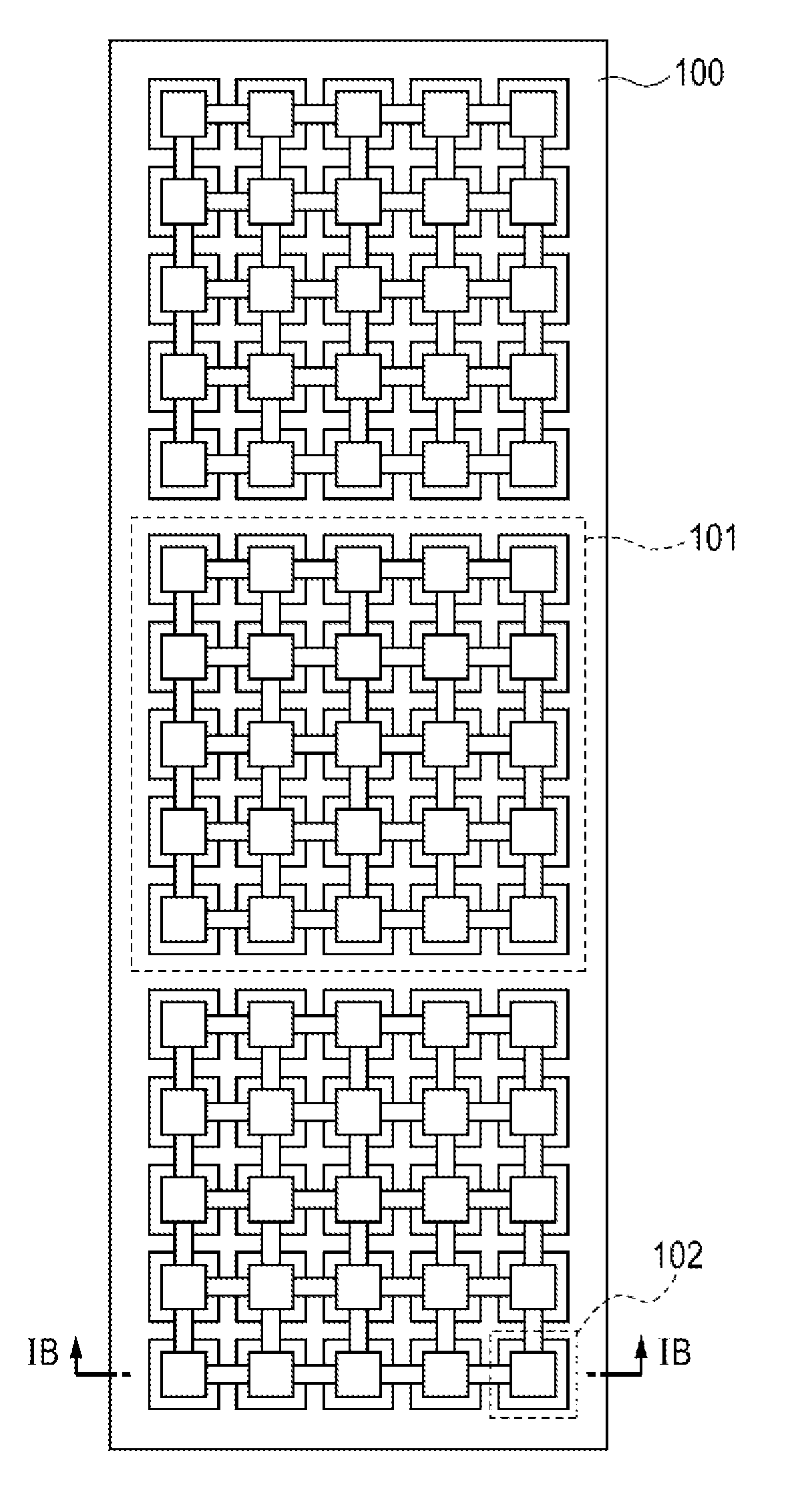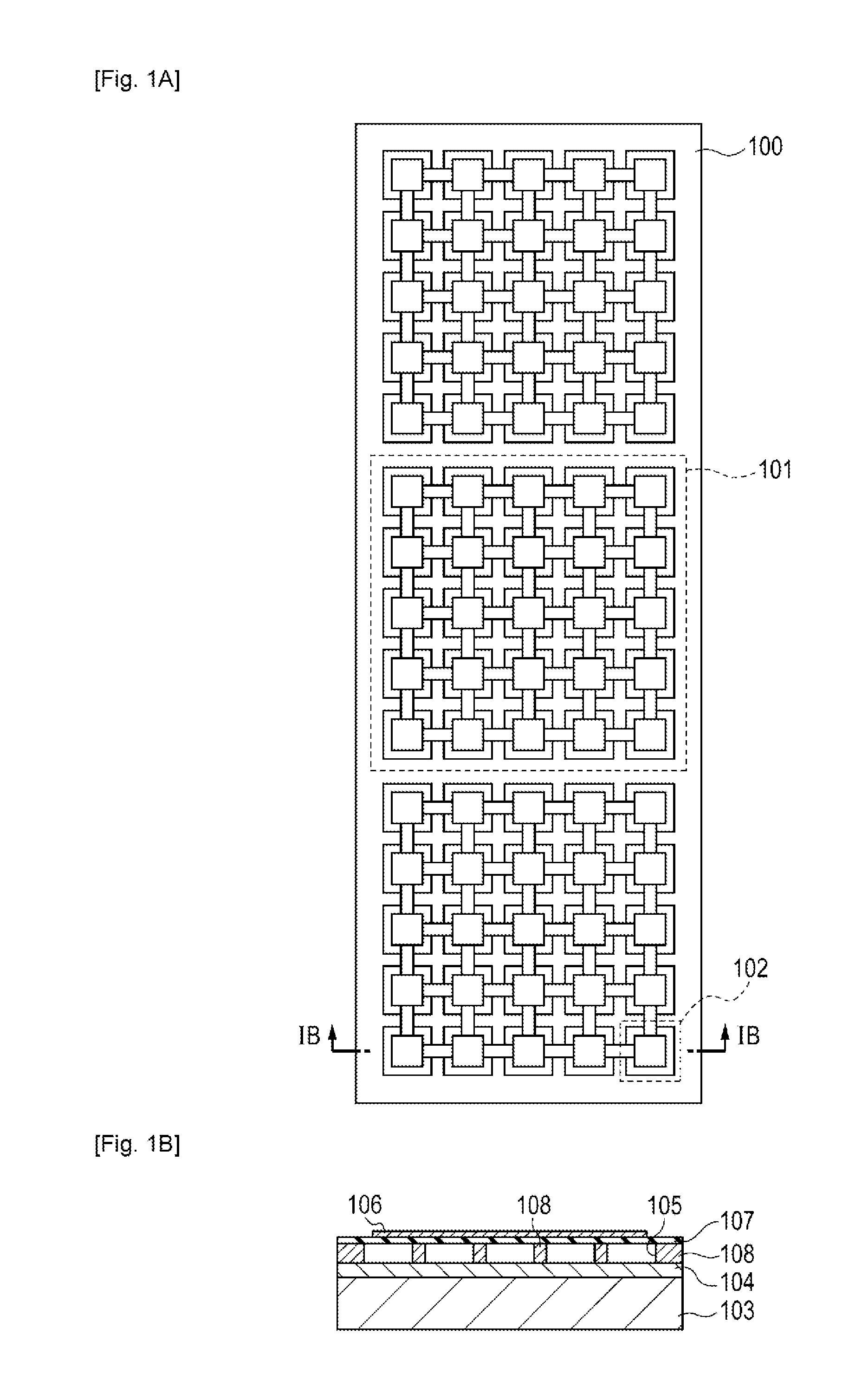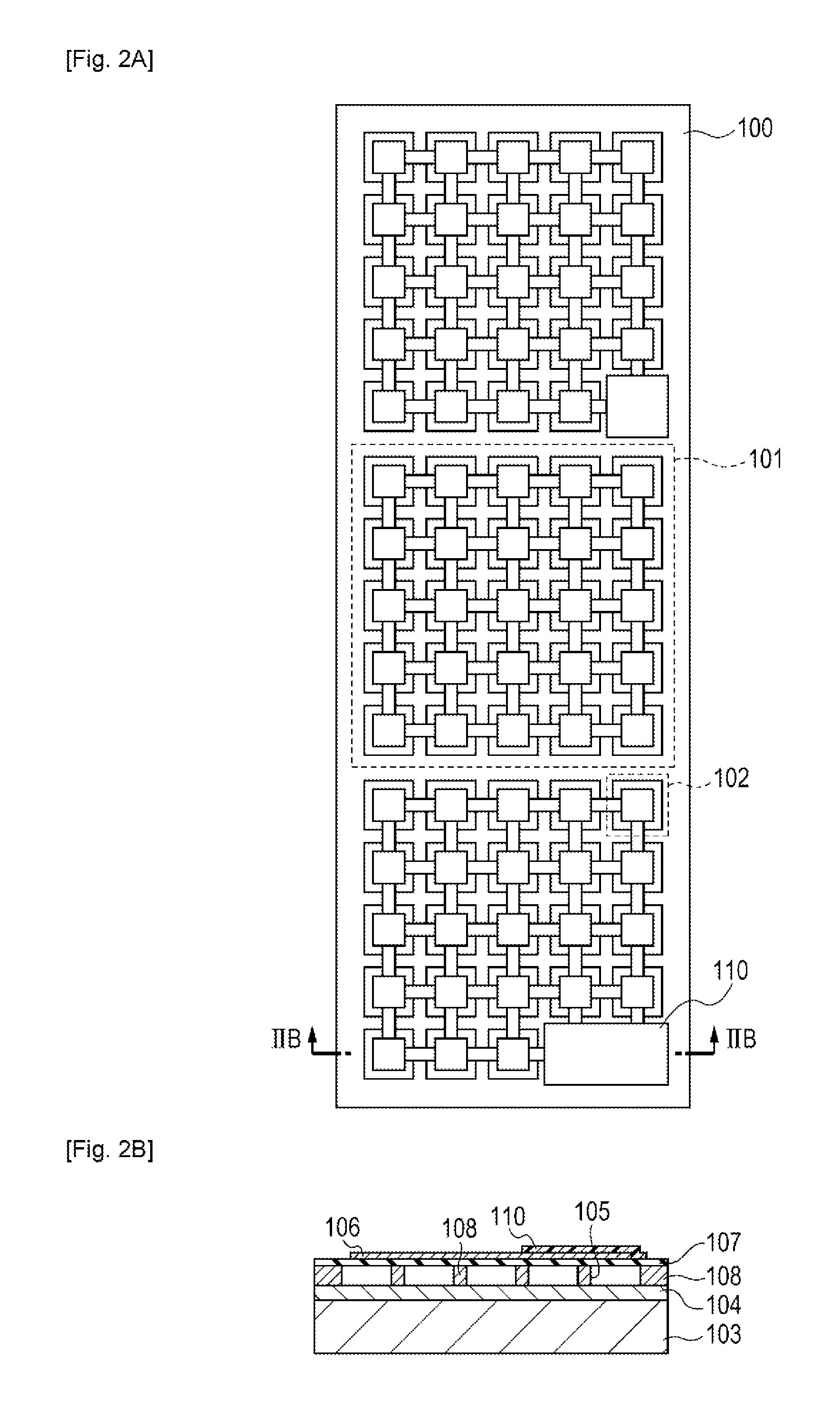Capacitive electromechanical transducer apparatus and method for adjusting its sensitivity
- Summary
- Abstract
- Description
- Claims
- Application Information
AI Technical Summary
Benefits of technology
Problems solved by technology
Method used
Image
Examples
first embodiment
[0024]In the following, a capacitive electromechanical transducer apparatus according to a first embodiment of the present invention before sensitivity adjustment processing (the capacitive electromechanical transducer apparatus having been manufactured as originally planned) will be described with reference to the drawings. As shown in FIGS. 1A and 1B, a capacitive electromechanical transducer apparatus 100 includes a plurality of elements 101. In each of the elements 101, a plurality of cells 102 are electrically connected in parallel with each other. In FIG. 1A, 25 cells 102 are arranged in the element 101, which is a component; however, the number of the cells 102 is not limited thereto as long as there are one or more cells in the element 101. Moreover, the capacitive electromechanical transducer apparatus 100 includes three elements 101 arranged in one dimension; however, the elements 101 may be arranged in two dimensions. In the first embodiment, the cells 102 include a lower...
second embodiment
[0031]A capacitive electromechanical transducer apparatus according to a second embodiment will be described. The basic structure of the capacitive electromechanical transducer apparatus according to the second embodiment is similar to that shown in the first embodiment. In the second embodiment, the vibrating membrane and upper electrodes of some of the cells are removed within the elements in accordance with the reception sensitivity of each of the elements measured in advance. As a result, an intensity of an output signal sent from the cells upon reception of an ultrasonic wave or the like can be reduced and the reception sensitivities of a plurality of elements can be made almost equal to each other. FIG. 4A shows a top view of a capacitive electromechanical transducer apparatus 100 whose reception sensitivity has been adjusted by a sensitivity adjustment processing method according to the second embodiment. FIG. 4B shows a sectional view taken along line IVB-IVB. Selected cells...
third embodiment
[0033]A capacitive electromechanical transducer apparatus according to a third embodiment will be described. The basic structure of the capacitive electromechanical transducer apparatus according to the third embodiment is also similar to that shown in the first embodiment. In the third embodiment, electrical connection between the upper electrodes of some cells within each element is cut in accordance with the reception sensitivity of the element measured in advance. As a result, an intensity of an output signal sent from the cells upon reception of a sound wave or the like can be reduced and the reception sensitivities of a plurality of elements with respect to a sound wave or the like can be made almost equal to each other. FIG. 5A shows a top view of a capacitive electromechanical transducer apparatus 100 whose reception sensitivity has been adjusted by a sensitivity adjustment processing method according to the third embodiment. FIG. 5B shows a sectional view taken along line V...
PUM
| Property | Measurement | Unit |
|---|---|---|
| Sensitivity | aaaaa | aaaaa |
Abstract
Description
Claims
Application Information
 Login to View More
Login to View More - R&D
- Intellectual Property
- Life Sciences
- Materials
- Tech Scout
- Unparalleled Data Quality
- Higher Quality Content
- 60% Fewer Hallucinations
Browse by: Latest US Patents, China's latest patents, Technical Efficacy Thesaurus, Application Domain, Technology Topic, Popular Technical Reports.
© 2025 PatSnap. All rights reserved.Legal|Privacy policy|Modern Slavery Act Transparency Statement|Sitemap|About US| Contact US: help@patsnap.com



